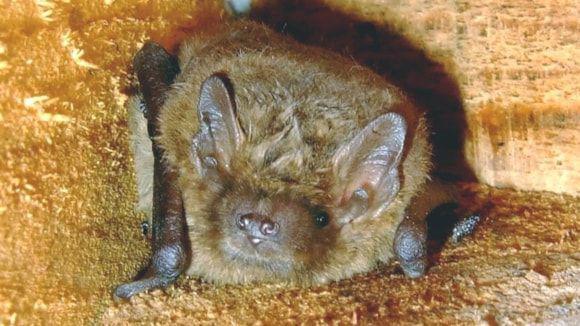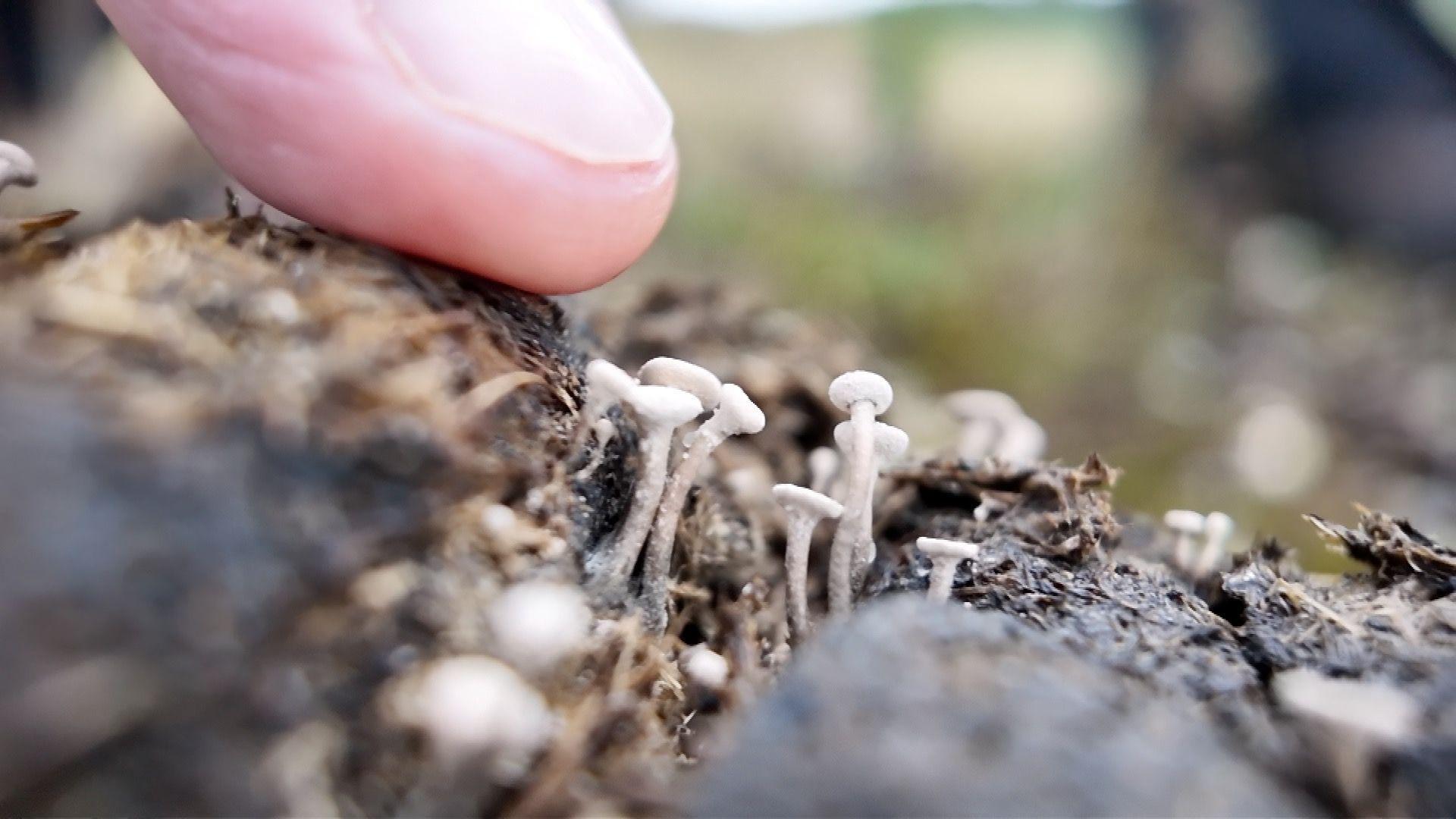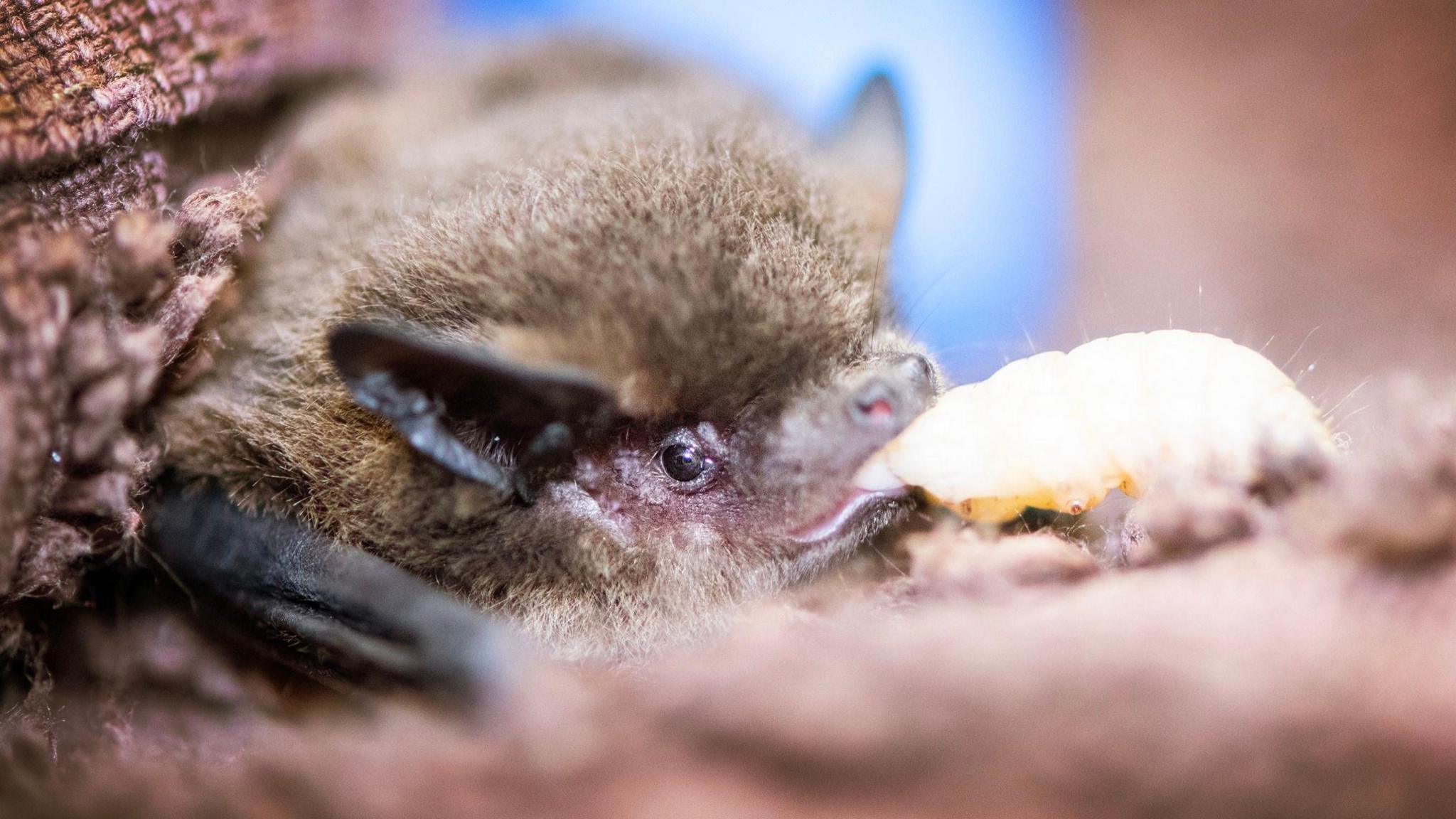Former doctor swaps A&E for bat hospital

Carolyn Hargreaves is currently caring for 16 injured bats at her home in Hambledon
- Published
A former A&E doctor who has transformed her home into a bat hospital has said she wants to help change public perception of the mammals.
Carolyn Hargreaves, who lives near Hambledon, Hampshire, now works to rehabilitate bats that can be returned to the wild and care for those that cannot.
The UK is home to 18 bat species, 17 of which can be found in the south of England.
Describing the winged animals as "charismatic", Ms Hargreaves said she wished others could see bats the way she does.
Following years working in a hospital, Ms Hargreaves has since turned her attention to bats, animals she believes are "bursting with personality".

This long-eared bat, known for its strikingly large ears, is being rehabilitated at the bat hospital
After joining the Hampshire Bat Group, she began caring for poorly bats, often arriving at her door with wing damage after having been attacked by domestic cats.
"The aim of the game is to get absolutely as many of them back out into the wild," she said.
"But some can't, and some are amenable to being kept."
One of her longest residents is Sweetie, a noctule bat found on a pavement in Portsmouth seven years ago with a fractured pelvis, likely after being trodden on.
She now lives permanently at the hospital and has become an ambassador for her species, visiting schools and community groups.
Sweetie's favourite place to be is tucked away inside Ms Hargreaves coat.

Sweetie, a noctule bat, is one of the mammals to have been rescued by Ms Hargreaves
Many bats face threats from habitat loss and modern building developments, which see roosting sites in old ancient trees or roofs disappear.
Ms Hargreaves works alongside physicist Ian Baker at the Hampshire Bat Group, who uses thermal imaging cameras to study bat behaviour and monitor the species.
"It's incredible to get insights of Daubenton's bats skimming across the water," he said.
"We're still learning about them because this time of year they seem to do a lot of courting and very strange gymnastics over the water."

Thermal imaging can pick up bats in the dark, indicated here by small white spots
The group has recorded around 10 species locally and reports that numbers are relatively stable.
However, four of the UK's 11 red-listed mammals are bats, including critically endangered species such as the greater mouse-eared bat.
Get in touch
Do you have a story BBC Hampshire & Isle of Wight should cover?
You can follow BBC Hampshire & Isle of Wight on Facebook, external, X, external, or Instagram, external.
Related topics
More on bats
- Published3 November

- Published31 October

- Published23 June

- Published16 September

- Published15 October
